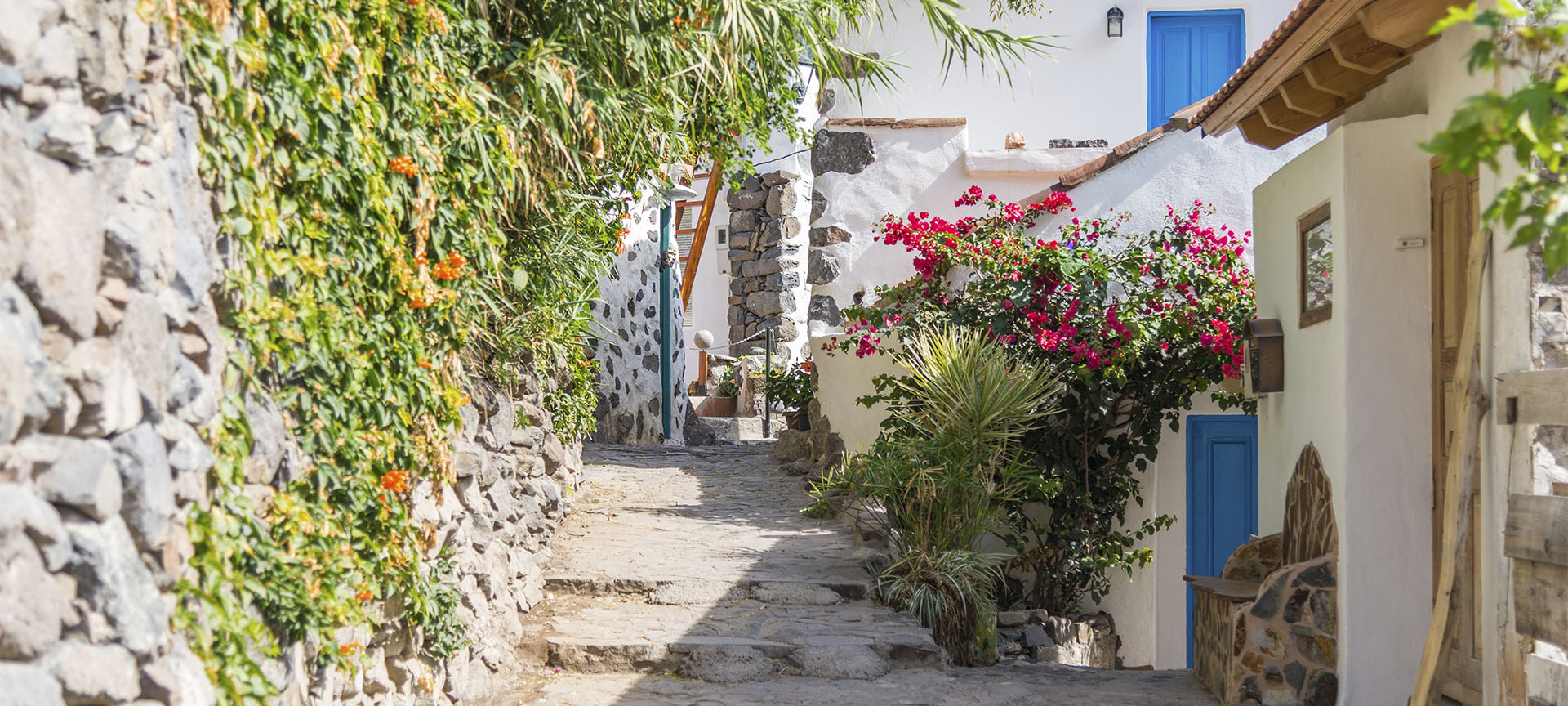This is one of the most outstanding tourist destinations on the island of La Gomera, thanks to the exceptional beauty of the scenery, which is characterised by green mountains with numerous palm trees, and traditional architecture with typical white houses. What’s more, the town has a small harbour and several excellent beaches.
The municipal district is part of the Garajonay National Park –distinguished with the UNESCO World Heritage designation– and is the site of one of the most widely visited venues for enjoying views over the park: the César Manrique viewing point. The surrounding area offers numerous opportunities for hiking, and is home to species of endemic fauna and flora such as the giant lizard of La Gomera. In addition, visitors can see the traditional farmed terraces (plots in raked steps across the mountain), which make an attractive backdrop to the town.Fiestas Another of the attractions of Valle Gran Rey are its popular festivities. One of the most symbolic is the offering of the Branch, which takes place on 16 August and features the offer of local produce and traditional pastries to the patron saint. This is a good opportunity to enjoy popular dancing accompanied by the beat of the typical La Gomera drum.Other interesting festivities in the municipal district are the celebrations in honour of Nuestra Señora de los Santos Reyes (6 January), Nuestra Señora de Fátima (13 May), San Antonio de Padua (13 June), San Juan Bautista (23 June), San Pedro (29 June), Nuestra Señora de la Salud and San Buenaventura (14 July), the Virgin del Carmen (16 July), the Virgin del Buen Viaje (last weekend in August) and the Virgin del Coromoto (first weekend in September, in La Hayas).GastronomyThe most typical dishes of Valle Gran Rey include a wide range of hearty soups –particularly the watercress potage; a toasted flour known as gofio, which is widely used in appetisers and desserts; and goats cheese. This cheese is best savoured in a type of delicious local pâté known as almogrote.The typical local cakes and pastries often feature the use of guarapo, the honey made from the sap of palm trees.





